Q
How to jump a Kia Optima 2019?
Need to jump-start your 2019 Kia Optima? Here's how to do it right. First off, make sure both vehicles are completely turned off. Grab a standard set of jumper cables—you know, the red (positive) and black (negative) ones. Start by connecting the positive clamp from the donor car to the positive terminal on your Optima's battery (it's marked with a "+" sign). Then take the other end of that red cable and hook it up to the positive terminal of the donor battery.
Next, attach the donor car's negative clamp to its own negative battery terminal. Now, for the last black clamp, don't connect it directly to your Optima's dead battery negative—instead, clamp it onto a clean, bare metal part of the engine, like the engine bracket. This helps prevent sparks near the battery, which is a safety thing you don't want to skip.
Once everything's hooked up, start the donor car and let it idle, maybe give the gas a light tap every now and then to keep the revs up a bit. Let it charge for about 1 to 2 minutes, then try starting your Optima. If it fires up, great! Now you need to disconnect the cables in the reverse order you connected them—so start with the black clamp from your Optima's engine, then the donor's black clamp, followed by the red clamp from the donor, and finally the red clamp from your Optima. Let your Optima run for at least 20 minutes after that to recharge the battery.
A quick heads-up: Modern cars have pretty complex electronics, so letting the battery die frequently can actually mess up the ECU. It's a good idea to check your battery's lifespan—most last around 2 to 3 years before needing replacement. If jumping it doesn't work, the issue might be with the alternator or electrical system, and that's when you'll want to get a pro to take a look. Also, if you're in Malaysia, that hot weather can speed up battery fluid evaporation, so check the electrolyte levels every six months or so. When shopping for a new battery, go for one with a high CCA (cold cranking amps) rating—it'll handle the local heat better.
Special Disclaimer: This content is published by users and does not represent the views or position of PCauto.
Related Q&A
Q
Are 2019 Kias reliable?
The 2019 Kia models are generally above average when it comes to reliability, especially popular SUVs like the Sportage and Sorento, which have built up a solid reputation in the Malaysian market. Their powertrains, such as the 2.0L and 2.4L naturally aspirated engines, are pretty well-proven tech, and maintenance costs are relatively reasonable, making them a good fit for local road conditions and climate. That said, some owners have mentioned occasional minor niggles with electronics—think touchscreen glitches or sensor hiccups—so it’s definitely worth getting a professional inspection before buying to check the car’s condition.
One thing that stands out is that most 2019 Kia models come equipped with smart safety features like lane keep assist and automatic emergency braking, which is a nice plus for this price bracket. For Malaysian consumers, regular maintenance is a must, especially since the tropical climate can take a toll on rubber components and cooling systems. Sticking with authorized dealerships or certified service centers will go a long way in keeping the vehicle in good shape. If you’re looking at a used model, prioritize ones with a complete service history and make sure to check for any flood damage—these details really matter for long-term reliability.
Q
What is the 2019 Kia engine lawsuit?
The 2019 Kia engine lawsuit primarily targeted Theta II GDI engines found in select 2011-2019 model-year vehicles sold in the U.S. market. The legal action alleged these engines might have a defect that could lead to unexpected stalling or even fire risks. In response, Kia rolled out related recalls and extended warranty programs to address the issues. For Malaysian consumers, while this lawsuit was mainly focused on the North American market, understanding international automotive recall mechanisms still holds value. After all, cars are global products, and manufacturers typically take corresponding measures across different markets based on technical investigation findings. If Malaysian Kia owners have concerns about their vehicle's condition, it's advisable to check their car's VIN through official channels to see if it falls under any technical campaigns. Additionally, following the manufacturer's recommended regular maintenance schedule is an effective way to prevent potential problems. It's worth noting that the Hyundai Motor Group (which includes Kia) has continued to invest heavily in engine technology in recent years. Their new Smartstream engine lineup has incorporated more reliability improvements, demonstrating the manufacturer's commitment to technical optimization.
Q
Is Kia Korean or Japanese?
Kia, a South Korean automotive brand founded in 1944 and headquartered in Seoul, is now a subsidiary of the Hyundai Motor Group, together forming the twin pillars of South Korea's automotive industry alongside Hyundai. Kia's vehicle lineup spans sedans, SUVs, MPVs, and electric vehicles, characterized by youthful design aesthetics and feature-packed technology. In the Malaysian market, models like the Kia Carnival, Seltos, and Sportage have struck a chord with consumers, thanks to their strong value proposition and generous warranty packages – some models even come with a 5-year unlimited mileage warranty, which is a big plus.
While Japanese brands such as Toyota and Honda enjoy significant popularity in Malaysia, Kia has carved out its own niche with its distinct Korean design language and global tech offerings, including Smartstream engines and the UVO connected car system. It's worth noting that Malaysia's automotive market is diverse and open, giving consumers the freedom to choose from brands across the globe. Korean cars tend to emphasize technology and design, Japanese models are renowned for their reliability and low maintenance costs, and Kia, in particular, has been making inroads with its hybrid and electric vehicles – the EV6, for instance – gradually entering the Malaysian scene and offering fresh options for eco-conscious drivers.
Q
Are 2019 Kia Optima good cars?
The 2019 Kia Optima is a solid contender in Malaysia's midsize sedan market, winning over many buyers with its well-rounded performance, comfortable ride, and generous equipment list. Under the hood, you'll find 2.0L and 2.4L naturally aspirated engines that deliver smooth power – perfect for city driving – while also returning decent fuel economy, which lines up nicely with what Malaysian drivers look for in a daily runabout.
Inside, the Optima goes for a clean, functional design. The center console features an 8-inch touchscreen with Apple CarPlay and Android Auto, giving it a good tech vibe. Safety-wise, it's kitted out with six airbags, stability control, and a reverse camera, offering peace of mind on the road.
The suspension is tuned more for comfort, doing a great job of soaking up bumps and irregularities, which is handy given Malaysia's varied road conditions. Now, it's worth noting that the Optima might not hold its value as well as some Japanese rivals in the used car market. But if you're prioritizing bang for your buck and a well-equipped interior, the 2019 Optima still makes a strong case for itself.
Kia's after-sales network in Malaysia is relatively comprehensive too, making servicing and maintenance pretty hassle-free – definitely a plus for owners.
Q
What is the recall on the 2019 Kia Optima engine?
The 2019 Kia Optima was recalled in some markets due to a potential engine issue, specifically related to manufacturing defects in the 2.4-liter Theta II GDI engine. These defects could lead to abnormal wear of internal components or insufficient oil circulation, and in extreme cases, pose a risk of engine stalling or even fire. Affected vehicles need to be taken back to the dealership for a free replacement of improved engine components or an ECU software update. Malaysian owners can check if their vehicle is included in the recall by entering their VIN on Kia Malaysia's official website, or by contacting an authorized service center directly. Such recalls are part of automakers' proactive approach to safety responsibilities. Hyundai Motor Group has implemented an extended warranty program for the Theta II engine series to enhance customer protection. It's advisable for owners to regularly check their oil condition and perform timely maintenance. If the engine warning light comes on, unusual noises occur, or there's a drop in power while driving, the vehicle should be inspected immediately. Malaysia's hot climate can add extra strain on the engine, so adhering to the original maintenance schedule and using the specified oil can effectively reduce potential risks.
Q
How much is a 2019 Kia Optima worth used?
If you're scouting for a used 2019 Kia Optima in Malaysia, you'll typically find prices ranging from around RM70,000 to RM120,000. The actual figure hinges on several factors: the car's overall condition, mileage, trim level, and service history. For instance, top-spec GT Line models or low-mileage gems might nudge closer to that upper end, while base variants or higher-mileage examples will sit more towards the lower side of the scale.
The Optima holds its own in Malaysia's pre-owned market, thanks to its comfy cabin, practical space, and well-rounded performance. The 1.6T and 2.0L engine options are particularly popular with family buyers, striking a nice balance between fuel efficiency and adequate power.
If you're looking to buy, here’s the drill: Always get a PUSPAKOM inspection to verify the mechanical health, and check the original service records to ensure there are no major accident red flags. It’s also smart to compare prices on local platforms like Carlist or Mudah to get a feel for the market. On top of that, Kia’s got a pretty solid after-sales network here, with reliable parts supply – that’s definitely a plus for keeping the resale value steady down the line.
Q
What kind of oil does a 2019 Kia Optima take?
For the 2019 Kia Optima in Malaysia, the recommended oil viscosity is 5W-20 or 5W-30 full synthetic oil that meets or exceeds API SN specifications. If your ride has a turbocharged engine, we'd lean toward 5W-30 for that extra high-temperature protection—it's worth it. Malaysia's hot and humid climate is no joke, so full synthetic oil handles the heat better and lets you stretch oil changes to around 10,000 km or 6 months, whichever comes first.
Kia Genuine Oil is obviously dialed in for the engine, but you've got options—big names like Shell Helix, Castrol Edge, or Petronas Syntium with the same specs work just fine. When you do the oil change, don't skip swapping the oil filter too (genuine is best) to keep that filtration working properly.
If your Optima's racked up over 80,000 km, think about stepping up to 5W-30 or even 5W-40 for better seal integrity—but always check the owner's manual or hit up an authorized service center first. It's all about balancing fuel economy and engine protection. And if you're regularly doing long hauls or carrying heavy loads, you might want to play it safe and shorten the interval to 7,000-8,000 km.
Q
What kind of battery does a 2019 Kia Optima take?
The 2019 Kia Optima in the Malaysian market typically comes equipped with a 12-volt lead-acid battery, most commonly the H6 (Group 48) size or a similar maintenance-free variant. Given Malaysia's tropical heat, we'd strongly recommend a cold cranking amp (CCA) rating of 650A or higher to ensure reliable starts even on scorching days. When replacing, double-check that the physical dimensions and terminal positions match the original to avoid fitment headaches. For this climate, prioritizing a battery with strong high-temperature tolerance is key – AGM (Absorbent Glass Mat) batteries are a solid upgrade here. They handle the stop-start demands and short trip duty cycles much better, maintaining stability where conventional batteries might struggle.
Malaysian Optima owners, listen up: regular battery health checks are non-negotiable. The intense heat here accelerates electrolyte evaporation and plate corrosion. Make it a habit to inspect the terminals every 6 months – keep 'em clean! Also, check the voltage; a healthy, fully charged battery should read around 12.6V. If your Optima has a smart charging system, ensure your new battery is compatible to avoid any electrical gremlins. And for those who frequently drive through heavy rain or flooded areas? A battery with superior sealing will help prevent moisture ingress and potential damage. Finally, if you're parking the car for an extended period, investing in a battery maintainer is a smart move to keep it topped up and extend its life.
Q
How much is an oil change for a 2019 Kia Optima?
For a 2019 Kia Optima in Malaysia, an oil change typically runs between RM150 and RM300. The exact price hinges on the type of oil you go for—mineral, semi-synthetic, or fully synthetic—and where you decide to get the service done. Authorized Kia service centers might charge a bit more, but you’re getting genuine parts and the peace of mind that comes with their warranty coverage. Third-party workshops, on the other hand, usually offer a more budget-friendly route.
Sure, fully synthetic oil costs more, around RM250 to RM300, but it’s a solid investment. It provides superior engine protection and lets you stretch the interval between changes to about 10,000 kilometers. Mineral oil, which sits in the RM150 to RM200 range, needs swapping out every 5,000 kilometers, so keep that in mind for long-term costs.
My advice? Pick the oil that best fits your driving style and wallet. Regular maintenance is key to keeping that engine running strong, so don’t skip those service dates. Oh, and always make sure they replace the oil filter too—you want that lubrication system clean and working at its best. And hey, the owner’s manual has all the deets on the Optima’s recommended service schedule. Sticking to Kia’s guidelines will help your car last longer and perform at its peak for years to come.
Q
How long does a 2019 Kia Optima last?
The 2019 Kia Optima, when driven normally and serviced regularly here in Malaysia, can typically clock up 200,000 to 300,000 kilometers or even more. Its actual lifespan really hinges on things like driving habits, how often you service it, and the road conditions it's subjected to. The Optima has built a solid reputation around its dependable powertrains – think the 2.0L and 2.4L naturally aspirated engines, as well as the 1.6L turbo. Paired with a 6-speed automatic gearbox, this setup is well-tuned and known to hold up nicely over time.
To keep your Optima running strong for the long haul, I'd recommend sticking to a regular service schedule – aim for every 6 months or 5,000 to 10,000 kilometers, whichever comes first. That should include the usual suspects: oil and filter changes, checking the brakes, and inspecting the tires. Malaysia's tropical climate can be tough on batteries and rubber components, so keeping an eye on those is extra important to prevent premature wear.
Another pro tip: using genuine parts and strictly following the manufacturer's service manual can make a world of difference in keeping the car reliable. Do all that, and the Optima won't just last; it'll maintain that nice driving feel too. It's a solid mid-size sedan that offers great bang for your buck. If you're in the market for a used Optima, definitely dig into the service records and vehicle history to make sure you're getting one that's been well looked after.
Latest Q&A
Q
What is the range of the Mercedes EQB 2022?
The 2022 Mercedes-Benz EQB offers an approximate all-electric range of 419 kilometers in the Malaysian market, based on the WLTP standard. Of course, your actual mileage may vary depending on driving habits, road conditions, and weather. Powering the EQB is a 66.5 kWh lithium-ion battery pack, which supports 100 kW DC fast charging. This means you can get from 10% to 80% charge in around 30 minutes – perfect for those daily commutes around Malaysian cities or even a quick weekend getaway.
As part of the Mercedes-EQ family, the EQB carries forward that signature Mercedes-Benz luxury feel. One standout feature is the availability of a 7-seat configuration, which is pretty rare in this segment of electric SUVs. Good news for folks here: the EQB handles Malaysia's tropical climate surprisingly well, with minimal impact on battery performance. So, you won't have to lose sleep over excessive battery degradation due to the heat.
It also comes with an intelligent energy recovery system, which helps squeeze out even more range by recapturing kinetic energy. If you're a Malaysian consumer thinking about making the switch to electric, besides just looking at the range figures, it's worth checking out the local charging infrastructure. The good news is that major cities in Malaysia are steadily improving their charging networks, and Mercedes has also rolled out exclusive charging services at some of their dealerships.
Q
How much is the Mercedes EQB 2022?
The 2022 Mercedes-Benz EQB starts at approximately RM278,888 in the Malaysian market, with the exact price varying depending on the chosen trim level and optional extras. As a pure electric SUV under Mercedes' EQ lineup, the EQB is offered in two variants: the EQB 250 and the EQB 350 4MATIC, each equipped with electric motors of different power outputs. It boasts a driving range of around 423 kilometers based on the WLTP cycle, making it a solid pick for consumers who want to blend luxury with eco-friendliness.
The Malaysian government offers certain tax incentives for electric vehicles, such as exemptions on import duties and sales tax, which help to bring down the overall purchase cost of the EQB somewhat. Beyond that, the EQB comes loaded with features like the MBUX intelligent infotainment system, a panoramic sunroof, and advanced driver assistance functions, really showcasing Mercedes' technological prowess in the electric mobility space.
For those considering an EV, besides price, the convenience of charging infrastructure is another key factor. Major cities in Malaysia already have a decent number of charging stations, and Mercedes also provides installation services for home wallboxes, further enhancing the overall ownership experience.
Q
How big is the EQB 2022?
The 2022 Mercedes-Benz EQB is a compact seven-seater electric SUV, measuring 4684mm in length, 1834mm in width, and 1706mm in height, with a wheelbase stretching to 2829mm. This size strikes a nice balance—nimble enough to navigate Malaysia's city streets while still offering plenty of room for passengers, making it a solid pick for families. Cargo space is practical too: 495 liters with the rear seats up, and a generous 1710 liters when you fold them down, which handles everything from daily grocery runs to weekend getaways with ease.
For Malaysian buyers, the EQB's electric powertrain isn't just eco-friendly; it also fits well with the country's growing charging infrastructure. With an NEDC range of around 419km, it's more than capable of handling longer trips, say from Kuala Lumpur to Penang, without range anxiety kicking in.
And true to Mercedes form, the EQB doesn't skimp on luxury. The interior uses high-quality materials, and those twin 10.25-inch displays add a tech-forward vibe. Little touches like the inclusion of Type-C charging ports (super common here) and wireless CarPlay show that Mercedes really thought about what Malaysian drivers actually need day-to-day.
Q
How big is the tank on a 2017 Renault Captur?
The 2017 Renault Captur comes with a 45-liter fuel tank, which is slightly above average for a small SUV in its class. That's more than enough for daily commutes and weekend getaways around town. Malaysian drivers can typically expect to squeeze out about 500 to 600 kilometers on a full tank under city conditions, though your actual mileage will depend on how you drive and the traffic you're dealing with.
What's clever about the Captur – being the urban-focused crossover that it is – is how that tank size balances fuel efficiency with real-world usability. Pair that with either the peppy 1.2-liter turbo petrol or the torquey 1.5-liter diesel engine (depending on your market's specs), and you've got a setup that's pretty easy on fuel.
A quick tip for owners: make sure to check that your fuel cap seals properly and that the low-fuel warning light is working as it should. Also, keep in mind that Malaysia's common RON95 petrol works perfectly fine in this car. If you're planning a long drive, especially over in East Malaysia, it's smart to map out your petrol stops ahead of time – some of those remote areas have pretty big gaps between stations. Oh, and don't sleep on the simple stuff: keeping your tires properly inflated and sticking to regular servicing can go a long way in keeping those fuel bills in check. Handy pointers for all you savvy Malaysian drivers out there trying to stretch every ringgit!
Q
How many litres per 100km is a Renault Captur?
The fuel efficiency of the Renault Captur varies depending on the specific trim and powertrain setup. Here in Malaysia, the version you'll mainly find on the market comes with a 1.3-liter turbocharged petrol engine. Official figures peg the combined fuel consumption at around 5.6 to 6.0 liters per 100 kilometers, but remember, real-world numbers can swing based on how you drive, the roads you're on, and how much you're hauling. This little SUV has won over city dwellers with its thrifty nature and nimble handling.
It's worth pointing out that Malaysian drivers need to factor in our local conditions too – think stop-and-go city traffic or cranking up the AC during those hot spells, both of which can take a bite out of fuel economy. Rivals like the Honda HR-V or Toyota C-HR are in the same ballpark, typically returning between 5.5 to 6.5 liters per 100 kilometers. My advice? Always take it for a test drive to get a feel for the real-world mpg, and keeping up with regular maintenance plus proper tire pressure will help keep that fuel efficiency in top shape.
View MoreRelated News
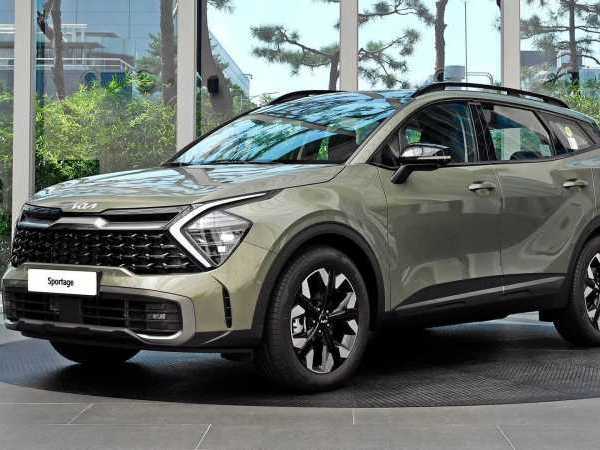
Kia Sportage: Superior Suspension for Smooth Ride
Kevin WongMay 19, 2025
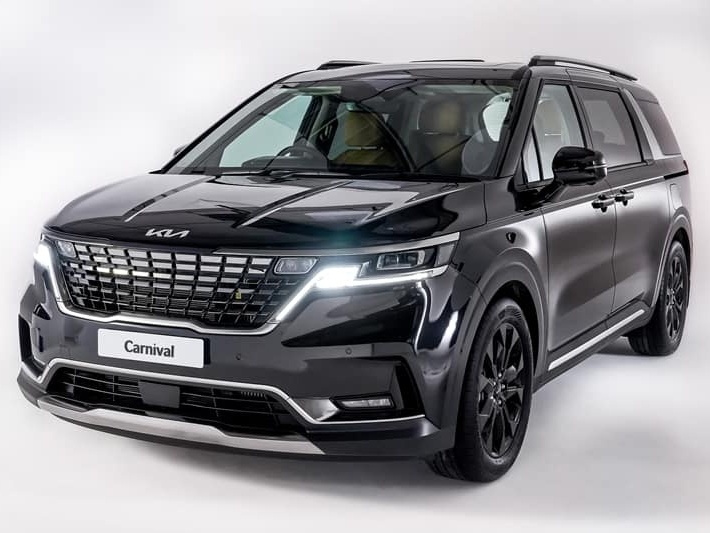
Kia Carnival: Spacious & Versatile for Every Journey
Kevin WongMay 19, 2025
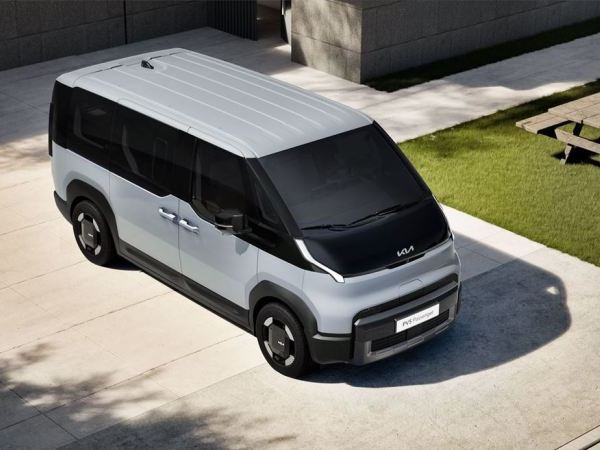
Kia reveals all details of PV5, with a maximum range of up to 400 kilometers
LienMar 11, 2025
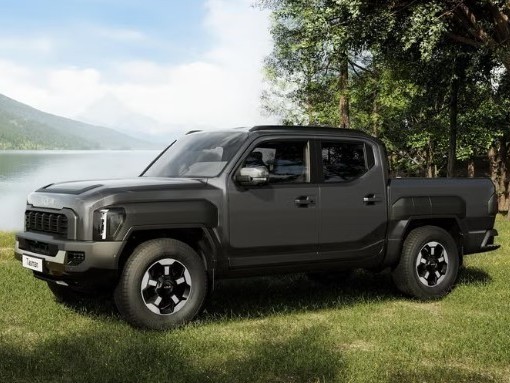
173L cargo box, 3500kg towing capacity, KIA Tasman meets all your needs!
MichaelOct 31, 2024

The interior of Kia's brand new pure electric sedan EV4 is exposed, expected to debut in mid-2025
MichaelOct 9, 2024
View More












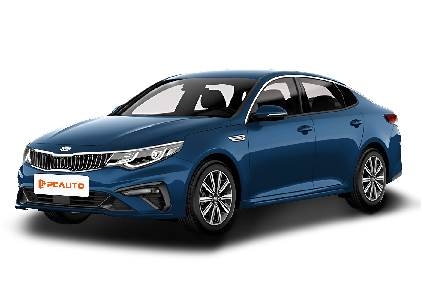
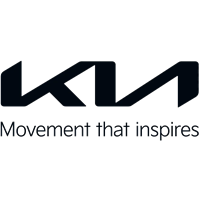 Cars
Cars


Pros
Cons